North of North: 7 Authentic Native Arctic Cultural Experiences for Curious Travelers
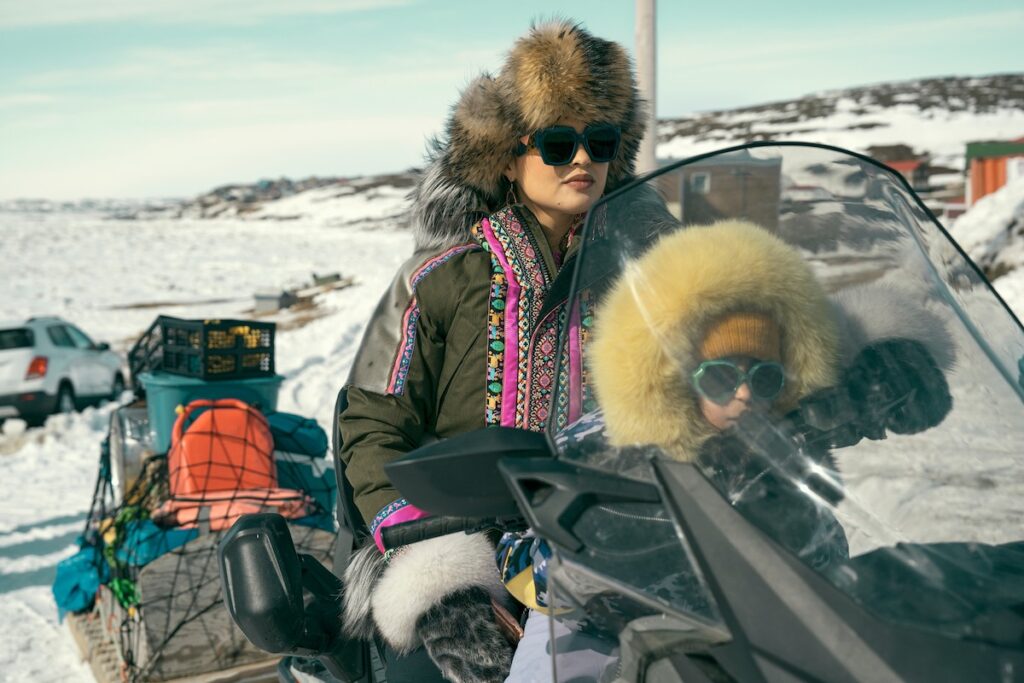
North of North: A Cultural Journey into the Arctic
If you’re anything like us at Cerca, you’ve binged your fair share of shows – thrillers and foodie travel shows and still thought, “Yeah, but what about something real? Something wild and wise?” That’s why we were buzzing when Netflix dropped North of North, a smart, funny, and deeply grounded new series set in the fictional Arctic town of Ice Cove.
It’s not a documentary—it’s a scripted comedy with real heart. But the stories it tells? They’re rooted in reality: the everyday beauty, messiness, and strength of Inuit life in the far North. A window into a cultural world that is honest and authentic – and a bit less supernatural than season 4 of True Detective.
Inspired by the show’s themes—identity, heritage, intergenerational wisdom—we’re sharing seven places where you can experience authentic Arctic Indigenous culture for yourself. These aren’t tourist traps. They’re hidden gems, cultural encounters, and regenerative travel moments that honor the people and traditions the show reflects so well.
And because they’re not touristy, they’re not the easiest places to travel to, or to navigate. So do your research, and put your culturally sensitive hat on. But these are the kinds of experiences that will stay with you, and add meaning to your life. It’s the kind of stuff we believe is worth the effort.
And we’re going to give you a head start on planning…
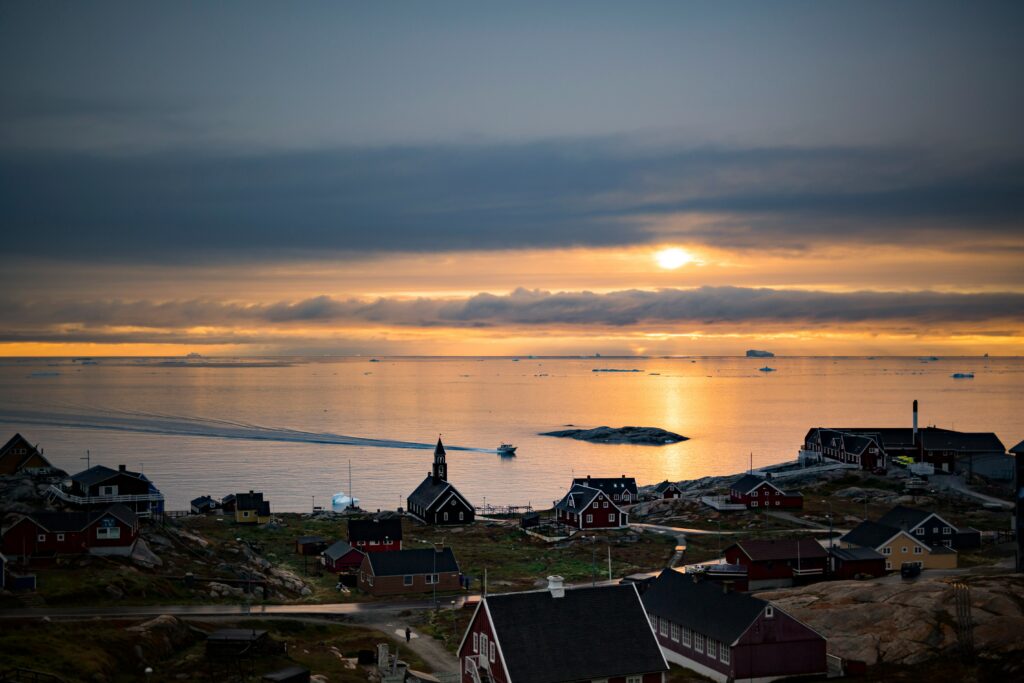
1. Greenland: Living with the Kalaallit in Ilulissat
In the Netflix series, Siaja navigates her hometown with grace and grit. Similarly, the Kalaallit people of Ilulissat walk a delicate line between tradition and modern life—resilient, rooted, and full of humor.
Greenland’s Kalaallit people have adapted to life in one of the harshest climates on earth for over 4,000 years. Their survival has been a complex dance with the environment—hunting seals and narwhal, building turf houses, navigating icebergs by instinct and ancient lore. The town of Ilulissat, perched beside the UNESCO-listed Icefjord, is a cultural heartbeat.
Experience It
First, check out Cerca’s excellent article about the unique and authentic foods to try while in Greenland.
Then, stay with local hosts through Ilulissat Guesthouse or take a cultural immersion tour with World of Greenland. Learn traditional kayak-building, eat mattak (whale skin and blubber), and listen to drum dancing that once echoed in shamanic ceremonies.
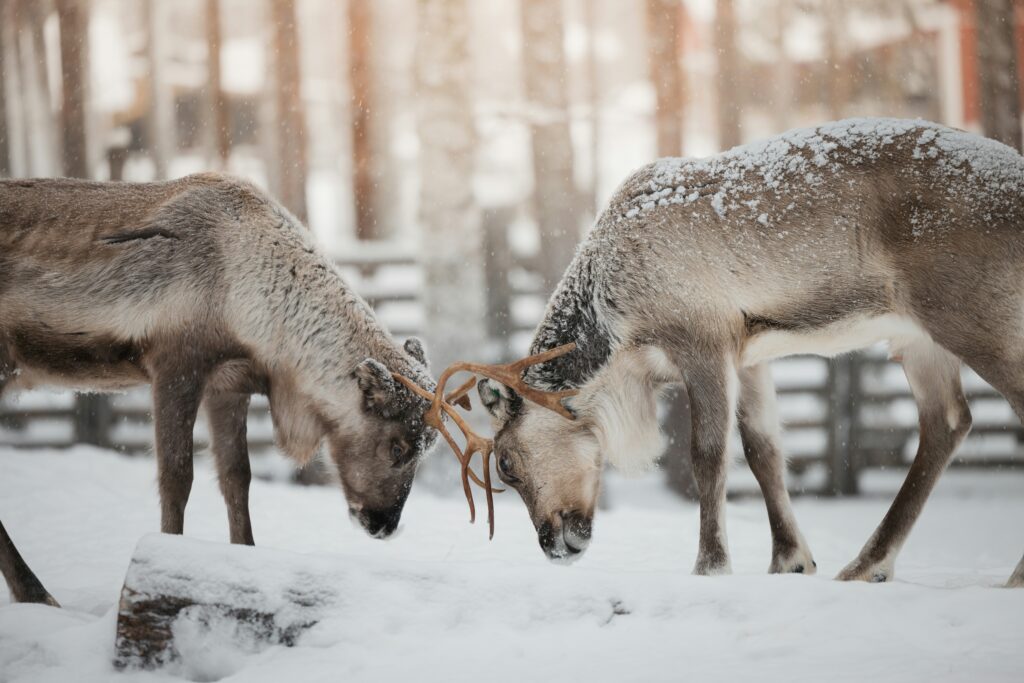
2. Norway: Sami Reindeer Herders of Kautokeino
Siaja’s journey is one of personal reclamation—and the Sami’s revival of joik (traditional song) and reindeer herding parallels that beautifully. Both are acts of resistance and joy.
The Sami are the only recognized Indigenous people of Scandinavia, with ancestral lands stretching across Norway, Sweden, Finland, and Russia’s Kola Peninsula. Their deep bond with the reindeer—who provide food, clothing, and spiritual purpose—is more than pastoralism; it’s identity.
Kautokeino is a stronghold of Sami language and culture. Here, joik (a form of melodic chanting) and duodji (craftsmanship) are not museum pieces, but living practices.
Experience It
Visit during the annual Easter Festival, where you can hear traditional joiking, see reindeer racing, and buy hand-tanned leather goods. For an intimate encounter, book a tour with Davvi Siida, a Sami family-run experience that includes storytelling, lassoing practice, and traditional meals inside a lavvu (tent).
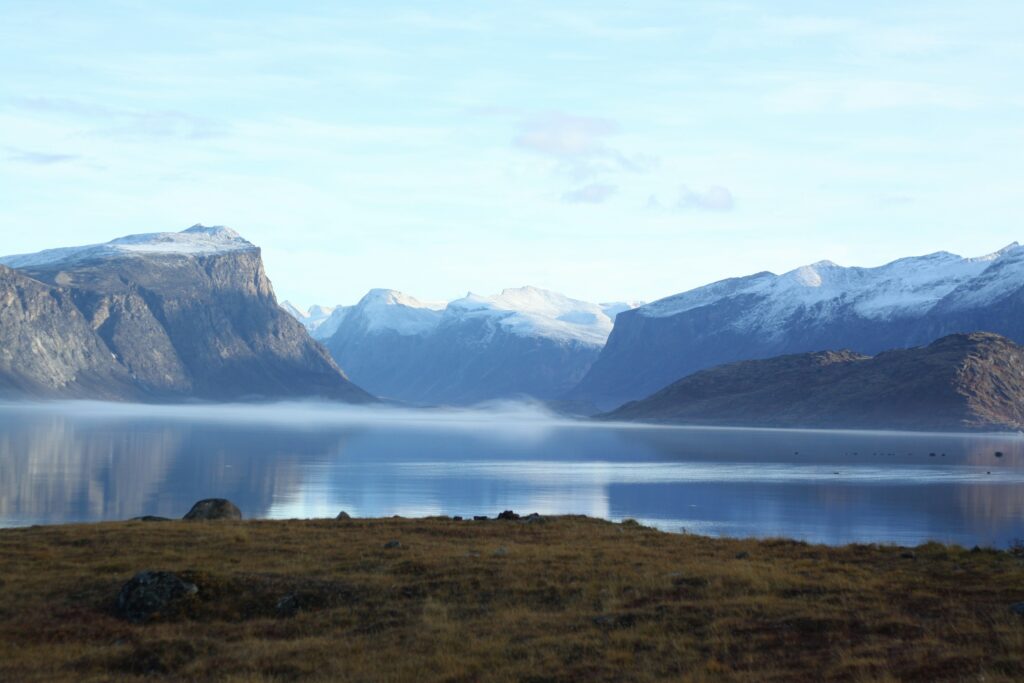
3. Nunavut, Canada: Inuit Storytelling in Pond Inlet
In North of North, storytelling happens everywhere—in the kitchen, at the store, under the northern lights. That echoes the oral traditions of Nunavut, where myths and legends have shaped Inuit lifeways for millennia.
The Inuit of Nunavut have sustained a vibrant oral tradition that predates written language. These stories carry survival knowledge, moral teachings, and deep ecological insight. Pond Inlet, or Mittimatalik, is known as the “jewel of the North,” surrounded by towering mountains and glaciers.
By the way, the fictional town of Ice Cove, where North of North is set, is located in Nunavut, where one of the show’s creators, Alethea Arnaquq-Baril, was born and raised.
Experience It
Book a storytelling circle through the Inuit Heritage Trust or book this Aboriginal Culture tour. Experiences often include throat singing, bannock-making, and discussions of Inuit cosmology and land stewardship.
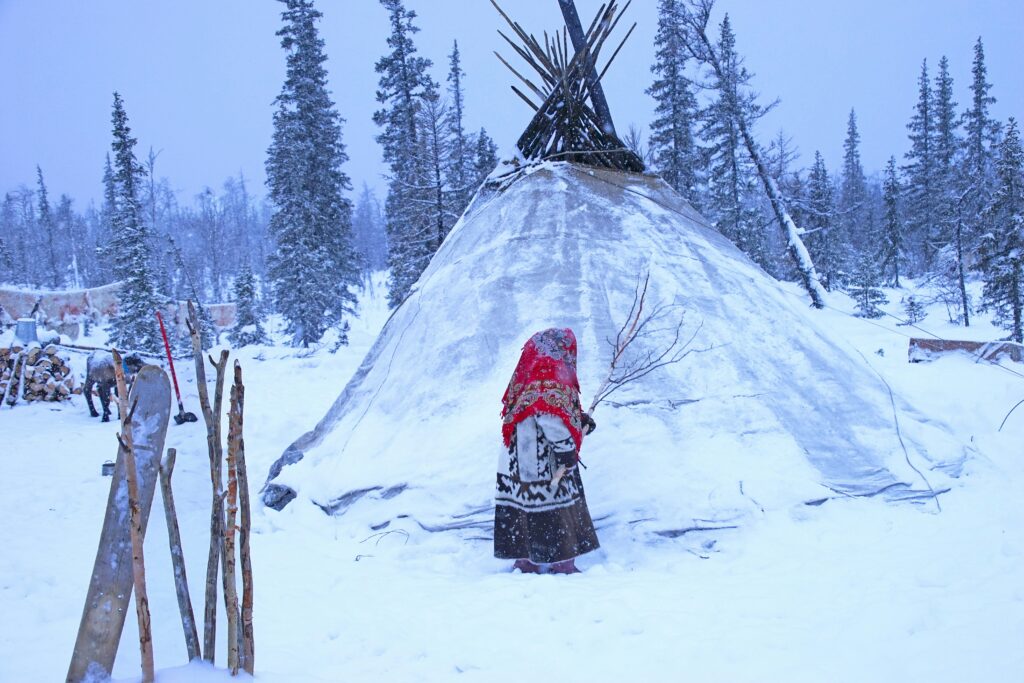
4. Russia: Chukchi Rituals in Anadyr
Just as North of North doesn’t shy away from tensions between tradition and modernity, the Chukchi people in Russia live that reality daily—navigating cultural revival in the shadow of past suppression.
The Chukchi people have lived in the Russian Far East for millennia, developing a symbiotic relationship with marine life and tundra. Their spiritual life centers on animism, and their whale and walrus rituals reflect a deep respect for the balance between human and animal.
Though Soviet policies nearly erased these traditions, cultural revitalization is happening through festivals, language programs, and crafts.
Experience It
Tourism here is rare and sensitive. Work with ethically guided operators or cultural exchange programs through RAIPON. Stay in village homes and participate in yurt-building or ritual dances if invited.
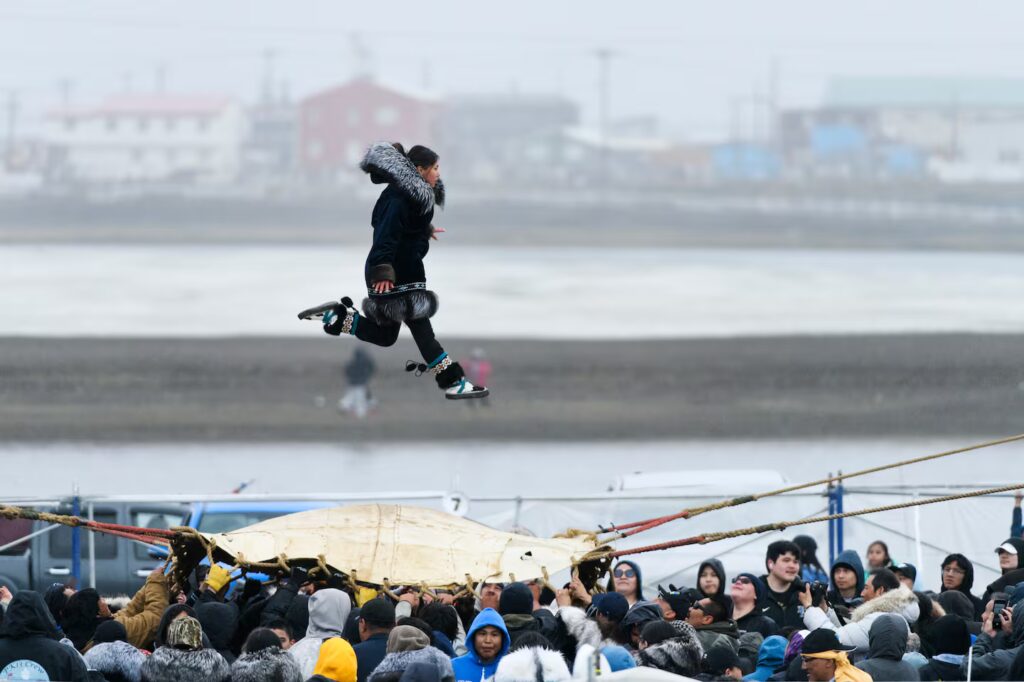
5. Alaska: Iñupiat Whale Hunters of Utqiaġvik
The food moments in North of North are 🔥—from frozen char to family feasts. In Utqiaġvik, the Iñupiat whale hunt is both sustenance and ceremony, embodying the community spirit the show celebrates.
The Iñupiat have lived on Alaska’s North Slope for thousands of years, depending on the annual whale hunt for food and spiritual sustenance. Every part of the bowhead is used, shared, honored.
Modern technology has entered the scene, but the ethical, communal values remain. Hunting is governed by traditional law, and climate change now complicates ancestral timelines.
Experience It
Have a look at Cerca’s article on the Alaskan frontier.
Visit the Iñupiat Heritage Center to learn about subsistence hunting and tool-making. If traveling in spring, check with the Alaska Eskimo Whaling Commission for dates of Nalukataq, the whale celebration, usually in June.
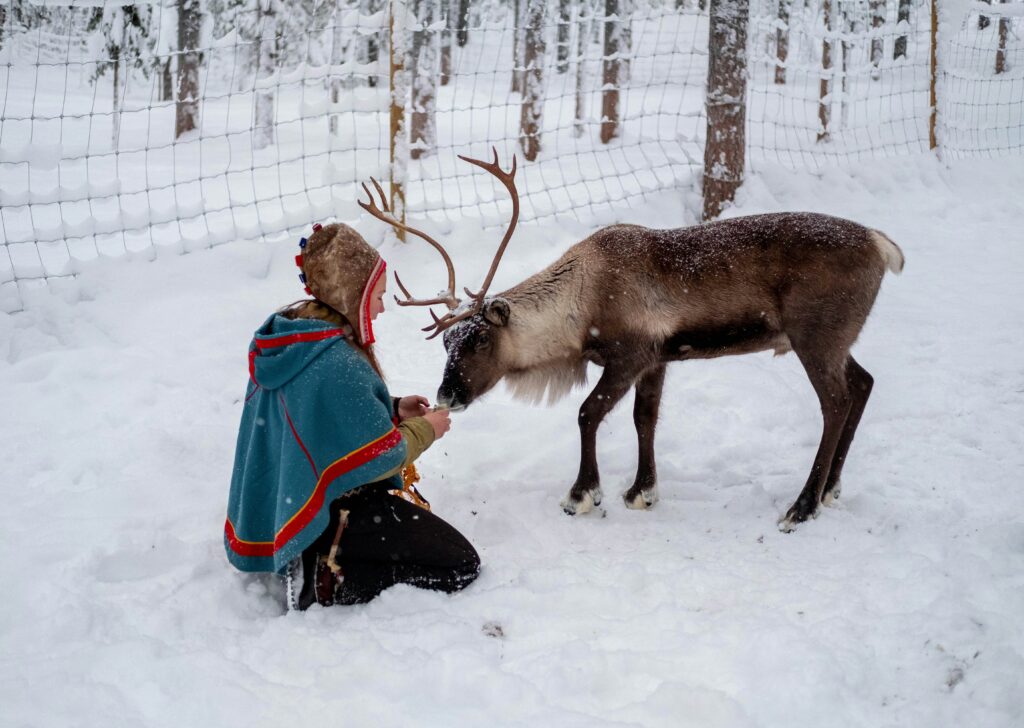
6. Sweden: Sami Duodji in Jokkmokk
On North of North, clothing and craft signal pride, identity, and belonging—just like duodji in Sami culture. The gákti isn’t just style. It’s history stitched in thread.
Duodji isn’t just art—it’s intergenerational knowledge. Every stitch, bead, and symbol on a gákti or a belt knife sheath tells a story: of origin, gender, family, skill. Jokkmokk, in Sweden’s north, is a duodji hub and site of one of the oldest winter markets in Europe.
This is where Indigenous craftsmanship and modern design meet with integrity.
Experience It
Check out Cerca’s article about the foods you must eat in Sweden – to give yourself a grounding in the flavors you’ll be surrounded by.
Check out the Ájtte Museum or visit the Sámi Duodji Sameslöjdstiftelsen, a foundation and shop that specializes in Sami handicrafts. Look for pieces made with regenerative materials and dyed using natural pigments.
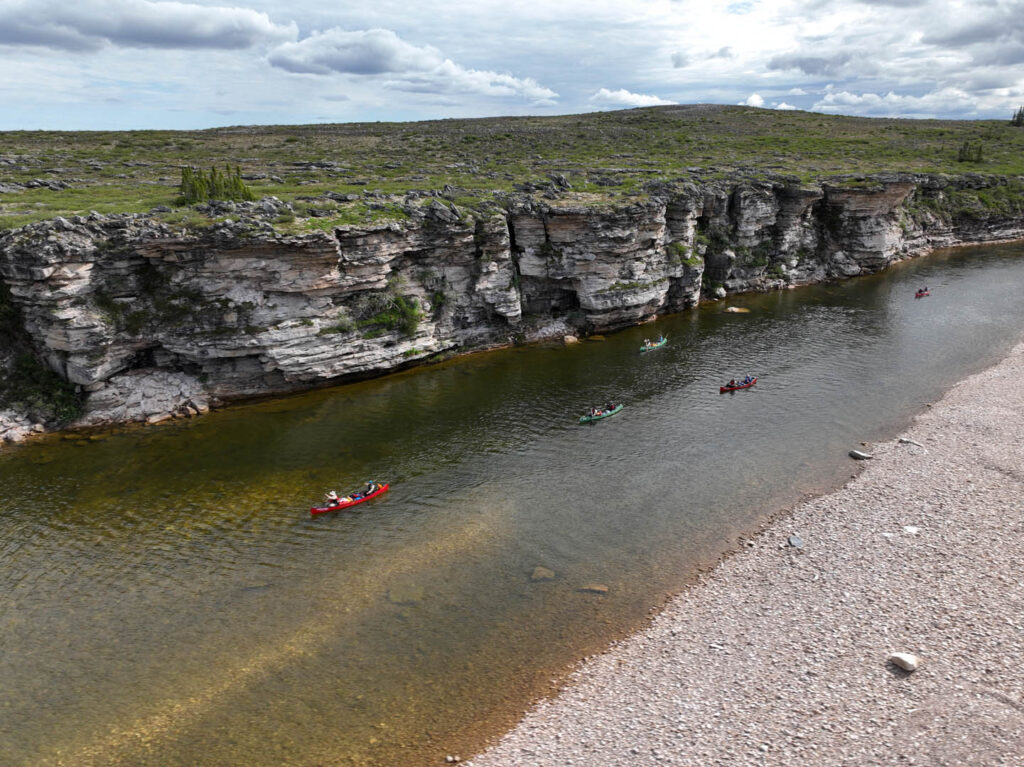
7. Canada: Dene and Métis Canoe Routes in Northwest Territories
Siaja’s emotional journey in North of North reminds us that roots run deep. The Dene and Métis canoe routes are not just travel paths—they’re memory lines.
Though not strictly Arctic, the Dene and Métis peoples of northern Canada form a critical cultural borderland. Their birchbark canoes were engineering marvels; their trails connected cultures from Hudson Bay to the Arctic Ocean.
Stories of the trickster Raven, medicine-gathering songs, and drum dances infuse their cultural life.
Experience It
Paddle the historic routes with Jackpine Paddle, a company owned and operated by Indigenous guides. Learn survival skills, place-based storytelling, and plant medicine identification.
Travel Tips for Going North of North
Be humble. You’re entering territories where ancestors still walk.
Travel with purpose. Choose ethical, locally run operators.
Eat what’s offered. Whether it’s fermented fish or raw whale, food is history.
Ask questions. Then listen more than you talk.
Buy local. Support Indigenous artisans and businesses directly.

Why These Experiences Matter
These aren’t “tourist activities.” They’re invitations to witness the continuity of ancient lifeways. In a world accelerating toward digital oblivion, these communities hold keys to sustainability, kinship, and respect for land. They’re not just Arctic experts. They’re culture experts. And we—travelers, watchers, learners—have much to absorb.
So next time you scroll Netflix or book a trip, remember: there’s an authentic place and culture that guide the storytelling of North of North.
And the real Arctic is out there, waiting.
North of North creators: Stacey Aglok-MacDonald, Alethea Arnaquq-Baril
Cast: Anna Lambe, Maika Harper, Keira Belle Cooper, Kelly William, Braeden Clarke, Bailey Poching, Nutaaq Doreen Simmonds, Zorga Qaunaq, Mary Lynn Rajskub, and Jay Ryan
Want more deep dives into hidden cultures, regenerative travel, and food that tells a story? Check out more on CercaTravel.com.